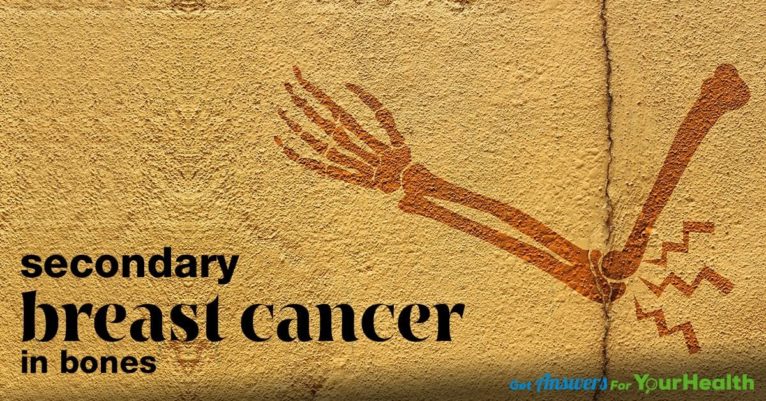1) Grab a FREE copy (Value $14.95) of one of my books Thyroid Symptom Overload
Just pay shipping $7.95 for any US orders. Or, if you want to pay full price plus shipping, order from Amazon :)
2) Take our Thyroid Quiz today and find out what "Thyroid Type" you have
This quiz will help you quickly discover where your symptoms are stemming from.
3) Join Our Thyroid Advocate Membership Site - Natural Thyroid Academy
FREE for a limited time. No credit card required.
4) Work with me and my team privately
Schedule your FREE 15 minute phone consultation and we can find out the best way to help you specifically.
Breast cancer is the second most common type of cancer that predominantly occurs in women. Almost 1 out of 8 women in the US will suffer from breast cancer in their lifetime.
With the advancement of breast cancer, the cancerous cells start invading other organs. Bones are the most common site for the invasion (metastasis) of breast cancer. When breast cancer spreads to bones, it is also known as secondary breast cancer in bones. It is different from the cancer originating in the bone.
What Is Metastasis Of Breast Cancer?
Cancer, of any type, is a mass of abnormal cells that has a potential to metastasize (invade other cells and tissues). The tumors that do not have the potential to spread or metastasize are not called cancerous, but benign tumors. Metastasis of breast cancer starts in the stage 3 cancer (advanced breast cancer), in which, cancer is found in regional lymph nodes.
The presence of tumor cells in the lymph nodes suggests that cancer has left its original site and may have invaded or is about to invade any other organ. However in stage 4 breast cancer, the cancer involves multiple organs. The most common site for the metastasis of breast cancer is the bones. And the commonly affected bones are spine, pelvis, skull, ribs and long bones of arms and legs.
The secondary breast cancer is generally treatable, but not curable. Due to the advancement of disease, it is difficult to completely eliminate breast cancer. The treatment goal is to relieve or lessen the symptoms and slow down the progression of cancer. The treatment is continued for prolonged period of time, often for many years.
How Are Bones Affected?
Bones contain two main type of cells called osteoblasts and osteoclasts. These two type of cells are the living cells. Osteoblasts are responsible for the formation of new bone cells, while osteoclasts destroy and remove the bone cells that get old or damaged. There is a continual balance of these cells which is known as remodeling of bone. Old cells die and new cells are built up to keep the skeleton strong and healthy.
When breast cancer spreads to bones, it negatively affects the bone mineral density and its strength. It is because chemicals are produced in the bones when they are invaded by the breast cancer. In turn, this causes disruption of the remodeling of bone. The osteoclasts become overactive that leads to the wasting of bone as more bone is being lost than being formed. It causes the symptoms of secondary breast cancer to develop.
Symptoms Of Secondary Breast Cancer:
Due to the invasion of breast cancer into the bones, you may develop some symptoms other than the primary symptoms of breast cancer. It is also possible that you may not develop any additional symptoms. Most people have a good outlook to the treatment of secondary breast cancer and the symptoms are considerably controlled.
The symptoms of the secondary breast cancer can be mixed with other diseases as many of the symptoms are accompanied by other diseases as well. Talk to your medical doctor about the symptoms and concerns you have regarding the cancer.
- Pain:
- The most common symptom of secondary breast cancer is the pain in or around the affected area. Pain may make your life difficult but it is a blessing as it is a protective mechanism. It gives indication that something wrong is going on in your body that needs to be addressed.
The pain that results from metastasis of breast cancer in the bones ranges from mild to severe. It is perceived differently by different patients. For instance, the pain can be felt as a dull ache or sharp or burning pain. Also, you may find pain persistent or the pain can vary with the time or activity. For example, the pain may get worse at night. If the pain is not controlled timely, it can affect the quality of life. Therefore, pain needs to be addressed.
- The good news is pain can be considerably controlled or relieved by the proper intervention. While talking to your doctor, try to be as specific about the pain as you can be. You can keep notes about the pain, as it can be helpful in delivering the best possible clues about your pain.
- Fatigue:
- Cancer related fatigue is a major concern as it is one of the most prevalent symptoms. A number of factors cause fatigue that impairs the proper functioning and also exhausts the patient. You all must know what tiredness feels like, but breast cancer related fatigue is much more than that. It is the feeling of weakness and constantly lacking energy that does not get relieved even by rest.
The decreased metabolism that results from breast cancer and its treatment is one of the major causes of cancer related fatigue. Fatigue is also caused by the competition of nutrients and oxygen by the tumor cells. This causes compromised supply of oxygen and nutrients to the healthy cells. As a result, metabolism slows down and fatigue ensues.
- Not only physical factors cause fatigue but also the psychological factors. Over thinking and depression diverts more blood supply to the brain, reducing the delivery of oxygen and nutrients (by blood) to the other body cells. Thus fatigue occurs.
- Both the physical and psychological factors needs to be monitored and addressed to control the breast cancer related fatigue.
- Bone Weakening And Fractures:
- As mentioned earlier, when breast cancer spreads to bones, it causes disturbance of remodeling of bone. Due to the increased amount of osteoclasts produced by the chemicals as a result of cancer invasion, weakening of bones occur. This causes increased risk of fractures, which needs to be prevented. The fracture that occurs as a result of breast cancer metastasis is known as pathological fracture. As it is not caused by accident but as a result of an underlying pathology (disease).
- Breast cancer and its treatment weakens the bone even if it does not spread to bones. This is because the controversial role of estrogen hormone. When estrogen is increased, it causes bones strengthening, and at the same time it increases the risk of breast cancer and vice versa. Therefore, bone strength should be maintained to decrease the risk of having fractures.
- If the fracture occurs, surgery or fixation is done to repair the injured bone. However, it is imperative to control the bone loss before a fracture occurs.
- Spinal Cord Compression:
- The spinal cord is encased in the vertebral column that is actually blocks of bones. If breast cancer spreads to vertebras, it can potentially affect the spinal cord. Due to the weakening of bones (vertebrae) and ultimately fracture or collapse of vertebrae, the spinal cord can be compressed (pressure on the spinal cord).
- The most common symptoms of spinal cord compression are the change in sensations (pins and needle like sensation) and increased pain in the spine. Tenderness can also occur over the affected area in the spine. Depending on the level of spinal cord compression, weakness in legs or arms and incontinence can also occur.
- Excessive Calcium In Blood:
- Calcium is present in specific amounts in the blood. Bones take the excessive amount of calcium to strengthen themselves. When osteoclast activity increases as in the breast cancer metastasis to bones, the bones start dissolving or degrading. This results in greater amount of calcium released in the blood and the bones weaken.
However, with the increased calcium in the blood, symptoms of hypercalcemia develops. The common symptoms are nausea, vomiting, confusion, drowsiness, weakness, being thirsty and constipation.
- You need to drink plenty of water to relieve the symptoms. In certain cases, fluids are injected intravenously in the body to prevent dehydration. Calcium in the blood needs to be controlled or flushed out of the body. Talk to your doctor if you experience any of the mentioned symptoms.
- Anemia:
- In some cases, secondary breast cancer in the bones affect the bone marrow’s ability to produce the blood cells. Bone marrow is present inside the hollow cavity of the bones. It is responsible for the production of red blood cells. When the cancer interferes with the working of bone marrow, red blood cells are not produced.
In other cases, abnormal blood cells are produced. Deficiency of red blood cells causes anemia. The common symptoms associated with anemia are tiredness/fatigue and breathlessness as oxygen carrying capacity is compromised. To confirm the diagnosis, blood test or bone marrow biopsy is required. Anemia is treatable. Consult your doctor to for the intervention in anemia.
Conclusion:
Breast cancer invades multiple organs in advanced stages. The most common site for the metastasis (spread) of breast cancer is the bones. Cancer weakens the bones by increasing the osteoclast activity (bone resorption).
The common symptoms associated with secondary breast cancer in bones are pain, fatigue, bones weakening with possible fractures, spinal compression (if cancer invades bones encasing spine) and anemia (if cancer affects bone marrow).
These symptoms should be addressed and controlled to improve the quality of life. The treatment for secondary breast cancer is an ongoing task as the final stage breast cancer is generally treatable but not curable.
References:
http://www.cancerresearchuk.org/about-cancer/breast-cancer/advanced/symptoms
http://breast-cancer.ca/metsurv-stat/
https://www.cancer.org/treatment/understanding-your-diagnosis/advanced-cancer.html








